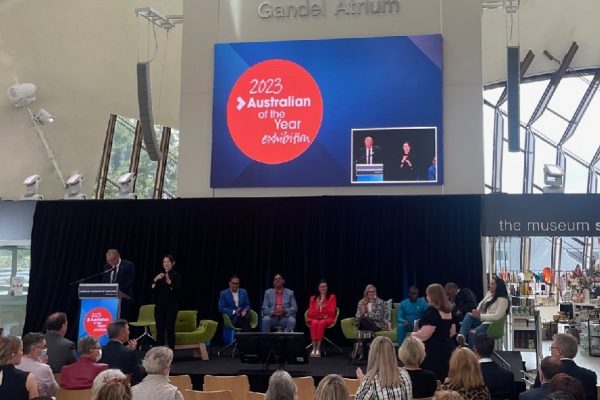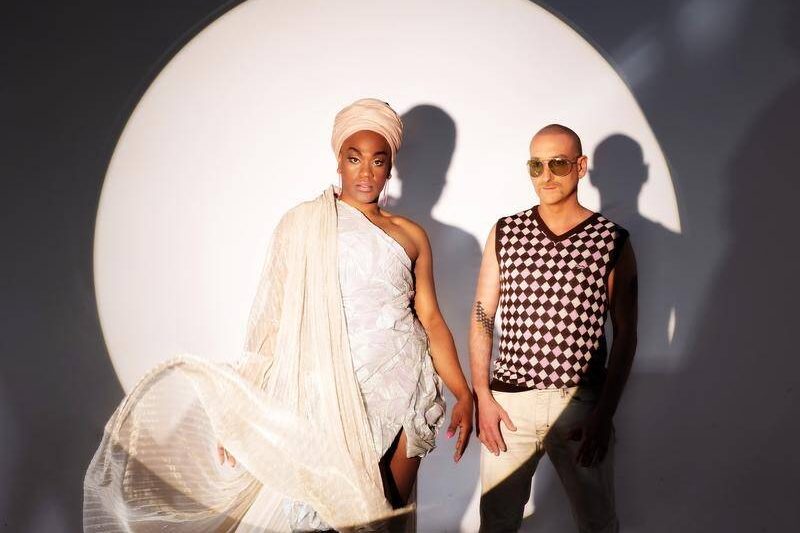
IF there was one thing, and one thing only that could have prevented NSW Australian of the Year, Craig Foster, from attending the launch of an exhibition on the subject at the National Museum this morning (December 14) it would be a semi-final in the World Cup.
Foster appeared via Zoom from Qatar at the head of an impressive line-up of state and territory recipients being honoured in the museum’s annual exhibition of 2023 Australians of the Year.
And in sure sign that lockdowns are over, seven of the eight recipients were here in Canberra in person for the occasion.
The event was presided over by NMA director Mat Trinca , who explained that each recipient had been asked to nominate an object for display that would summarise their lives – “a deeply personal thing to do,” he said.
On hand was Ngunnawal elder Caroline Hughes, who set the tone of the occasion by talking about the pivotal nature of one’s own language – “I sometimes dream in my own language, now,” she told those present.
It was an idea that was picked up several times in the morning, first by Karlie Brand, CEO of the Australia Day Council, who told those present how she had made an effort to learn some Ngunnawal to give her speech, and noted that this was the 20th anniversary of the local hero category.
It was then time for Mikhala Harkins-Foster, lead curator of the exhibition, to introduce each recipient.

First up was Foster, who, as Harkins-Foster noted, had been nominated for his human rights activity rather than his sporting prowess. His choice of an object was the T-shirt from his #SaveHakeem campaign, a tribute to the bravery of asylum-seekers.
Next up was WA advocate for end-of-life care, Prof Samar Aoun, who chose her grandfather’s medallion, acknowledging the inspiration of his work as a doctor in Lebanon.
During his time, one didn’t have a choice as to how to die but now here in Australia, she said, it was important for us to improve our death literacy.
“You only die once, so make it good,” she advised.
Noted musician, William Barton, representing Queensland had chosen two clap sticks used in ceremonial songs, which he was to demonstrate to during the morning.
Barton, now and associate professor at the ANU, told those present that in July one of his compositions had been performed at Sydney Opera House. Seeing blocks of wood from the old concert, he asked permission to use them and had 60 pairs of clap sticks made up to be played by 60 First Nations kids.
NT Australian of the year, Samuel Bush Blanasi – NT, Chair of the Northern Land Council, chatted informally of the many languages that he was capable of speaking, arguing that “learning on country” was the very best thing for kids – forget about Twitter and Facebook. His chosen object was a picture of his mum and stepfather who had raised him to become a cultural handler of knowledge.
Next up from SA was body image activist,Tarryn Brumfitt, who told us how many young people had committed suicide because of body shame.
“Science tells us what to do,” she said, and it was just a matter of us activating that. Her chosen object was a Rubik-style cube, showing 18 children grappling with this complex issue.
Tasmania’s John Kamara, co-founder, Culturally Diverse Alliance of Tasmania and African Communities of Tasmania, chose a painting by his niece to sum up his life.
“We should grow together,” Kamara said, criticising politicians for bringing immigrants and refugees into their political games.
” we all have to learn the language,” he said.
From Victoria came Dr Angrej Killian, co-founder of the Health Awareness Society of Australia, another polyglot recipient who as a paediatrician had chosen a mug showing himself wearing a crown (Raj means king) and a photo of his daughter as a baby. she was now 22 and studying medicine, a sign that if you work hard you can get there.
The final speaker was was the ACT Australian of the year, insect farming pioneer Olympia Yarger – who chose a “maggot robot,” whose purpose of course was to breakdown waste – few creatures were more efficient than it than the humble maggot. Such a machine, she said were already saving huge amounts in greenhouse gases.
The Australian of the Year exhibition will be at the National Museum of Australia until February 19.
Who can be trusted?
In a world of spin and confusion, there’s never been a more important time to support independent journalism in Canberra.
If you trust our work online and want to enforce the power of independent voices, I invite you to make a small contribution.
Every dollar of support is invested back into our journalism to help keep citynews.com.au strong and free.
Thank you,
Ian Meikle, editor




Leave a Reply